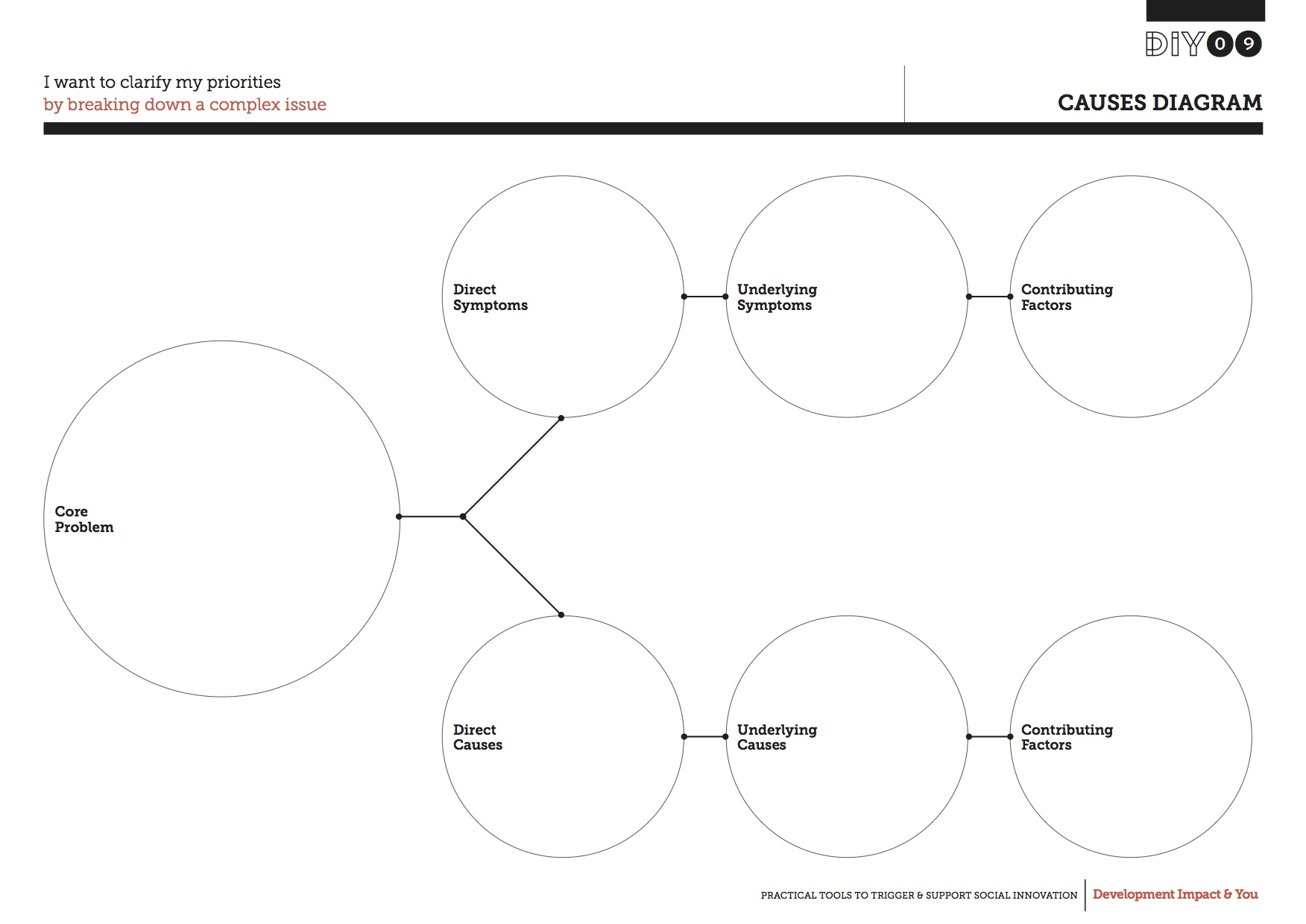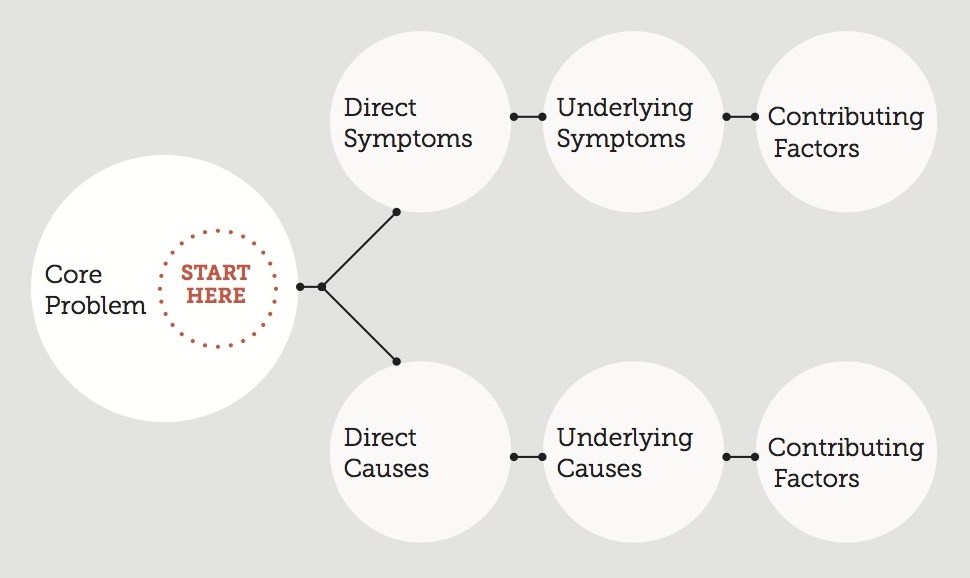What is the root cause of a problem? Often there isn’t one simple answer. The bigger the problem, the more likely it is that the roots will be widespread, and mapping out the causes can quickly get out of hand, making the problem seem overwhelming.
The Causes Diagram helps you think of a problem in a thorough manner and provides a structured way to analyse it. Its pushes you to deconstruct all possible causes for the problem rather than the obvious ones. You can use it both to analyse a new problem and as a tool to highlight the gaps in an existing problem.
It also helps to differentiate causes from effects or symptoms, giving you a better idea of the solutions needed to solve a problem permanently, and it helps to build a shared understanding of what it is you’re working on.

